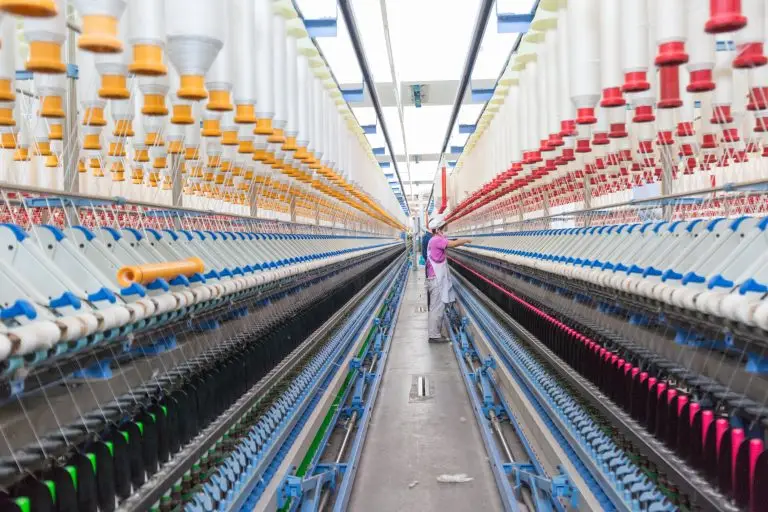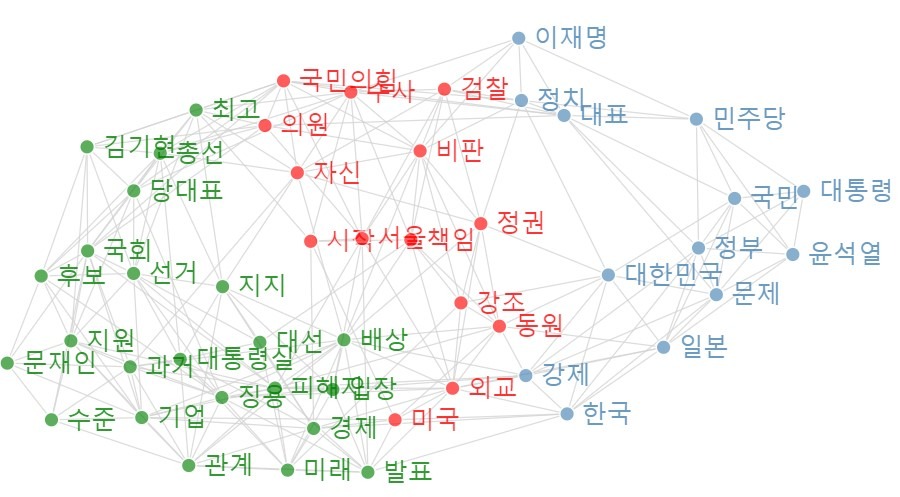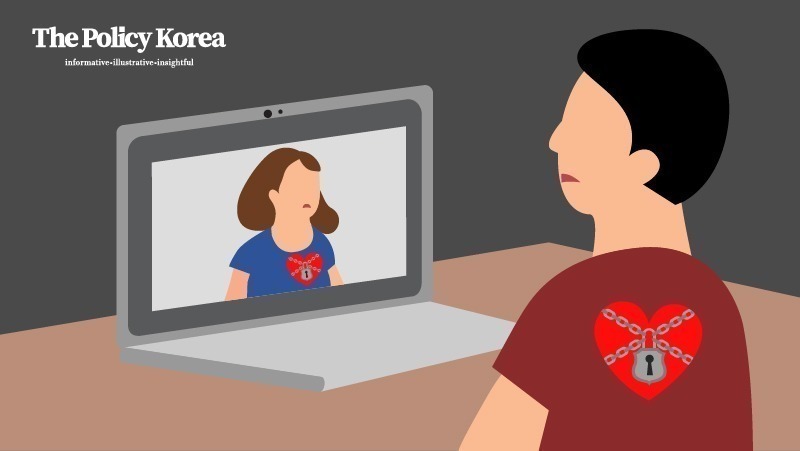[동아시아포럼] EU의 지속가능한 순환섬유 전략과 동아시아의 도전
섬유산업, 온실가스 배출·폐수방류 등 환경오염에 영향 EU, 지난해 패스트 패션 퇴출 위한 순환섬유 전략 발표 對 EU 수출 비중 높은 동아시아, 지속가능성 전략 필요
[동아시아포럼]은 EAST ASIA FORUM에서 전하는 동아시아 정책 동향을 담았습니다. EAST ASIA FORUM은 오스트레일리아 국립대학교(Australia National University) 크로퍼드 공공정책대학(Crawford School of Public Policy) 산하의 공공정책과 관련된 정치, 경제, 비즈니스, 법률, 안보, 국제관계에 대한 연구·분석 플랫폼입니다. 저희 폴리시코리아(The Policy Korea)와 영어 원문 공개 조건으로 콘텐츠 제휴가 진행 중입니다.
유럽연합(EU)에 따르면 섬유산업은 EU에서 식품, 주거, 교통에 이어 네 번째로 환경 영향이 큰 산업군이다. 물과 토지 이용 측면에서는 세 번째, 원자재와 온실가스 배출 측면에서는 다섯 번째로 영향이 크다. 이에 EU는 섬유산업의 지속가능성 제고를 위해 무역 정책과 규제를 강화하고 있다. 이 가운데 지난해 4월에 발표한 ‘지속가능한 순환 섬유를 위한 EU 전략(EUSSCT)’은 EU 섬유시장의 70% 이상을 공급하는 동아시아 기업들에 상당한 영향을 미칠 것으로 예상된다.

동아시아, 섬유산업의 글로벌 공급망에서 핵심적 역할
EUSSCT는 지속가능한 섬유산업의 생태계를 조성하기 위한 기본계획으로, 특히 산업의 80%를 차지하는 의류업을 타깃으로 한다. EUSSCT에 따르면 오는 2030년까지 EU 권역 내에서 거래되는 모든 섬유 제품은 내구성 강화, 유해물질의 제거, 재활용 소재의 사용, 수선 등 재활용 가능성 보장 등과 관련한 기준을 준수해야 한다. 과잉생산, 과잉소비, 과잉폐기로 이어지는 패스트 패션을 퇴출하고 여러 번 입고 재활용 가능한 의류를 생산하기 위해 섬유 재활용을 어렵게 하는 유해물질의 사용을 제한하고 판매되지 않거나 반품된 의류의 폐기도 금지한다. 일각에서는 EUSSCT를 두고 보호무역주의라는 비판이 나오고 있지만 EU는 EUSSCT를 통해 회원국뿐만 아니라 섬유산업의 무역 파트너들도 지속가능한 생산방식을 채택할 것으로 기대하고 있다.
아시아에서 의류·직물·신발 등 섬유산업은 6,000만 개의 일자리를 창출하고 수백만 명에게 간접고용의 기회를 제공하는 등 국가의 경제 발전에 기여하고 있다. 특히 동아시아는 섬유산업의 글로벌 공급망에서 핵심적인 역할을 하고 있는 주요 생산국으로 지난 2019년 전 세계 섬유 수출의 약 55%를 차지할 정도다. 동아시아의 섬유산업은 여전히 성장하고 있으며 특히 나이키, 자라, C&A, H&M 등 유럽 패션기업의 생산지인 중국, 인도네시아, 베트남, 캄보디아 등은 가파른 성장세를 보이고 있다. 일례로 지난해 베트남은 376억 달러(약 480조원)에 달하는 의류·직물 제품을 수출했는데 이 중 58억 달러(약 75조4,000억원)가 EU에서 거래됐다.
지난 2020년 유럽자유무역연합(EFTA)·싱가포르 간 자유무역협정(FTA)과 EU·베트남 자유무역협정(EVFTA)이 체결된 이후 동남아시아 국가들의 무역량이 증가하면서 급격한 성장세를 보였으며 EVFTA는 EU 시장에서 베트남 제품에 대한 무역 의존도를 높이는 효과가 있었다. 하지만 코로나19 팬데믹 이후 EU·미국 등 주요 시장에서 수요가 감소하면서 동아시아의 의류·직물 산업은 어려움을 겪고 있다. 인도네시아, 말레이시아, 태국, 베트남의 직물 수출도 감소했다.
탄소제로 등 지속가능성 확보 위해 섬유산업 변화 필요
섬유산업은 환경오염에 큰 영향을 미친다. 버려지는 옷으로 인한 전 세계 탄소배출량은 연간 120억 톤으로, 이는 온실가스 배출량의 10%에 달한다. 폐기뿐만 아니라 생산 과정에서도 많은 환경오염이 발생한다. 티셔츠 1장을 만드는 데 약 2,700리터의 물이 사용되는 데다 면화 재배를 위해서는 전 세계 사용량의 24%를 차지하는 양의 살충제가 살포된다. 또 다양한 염료, 표백제 등의 사용으로 수질오염이 발생해 의류 제조 폐수가 전 세계 폐수의 약 20%를 차지할 정도다. 화학 합성소재는 전 세계 플라스틱 생산량의 20%로 특히 세탁할 때마다 미세플라스틱이 방출되는데, 연간 100만 톤의 미세플라스틱이 하천과 바다로 흘러들어가 환경을 파괴한다.
이렇듯 동아시아의 섬유기업들의 성장세가 둔화하는 상황에서 EUSSCT의 시행은 동아시아의 의류·직물 제조업체에 예상보다 더 큰 영향을 미칠 것으로 보인다. 의류·직물 제조업체들은 EU 시장에 수출을 지속하기 위해 EUSSCT의 새로운 규정에 적극적으로 대응해야 한다. EU가 2030년 섬유산업의 완전한 순환경제를 목표로 함에 따라 순환성, 소급성(traceability), 탈탄소화 등과 관련한 압박이 가중되고 지속가능한 생산방식으로 전환하는 과정에서 생산비용 증가가 불가피하기 때문이다. 더욱이 동아시아의 의류·직물 제조업체들은 그동안 재활용 가능한 자원을 활용하지 않았기 때문에 더욱 강화된 검사를 받을 가능성도 있다. 이에 대응하기 위해서는 탄소제로를 목표로 한 섬유산업의 비즈니스 모델과 기술·공정혁신이 필요하다.
인센티브·인프라 등 산업 전반에서 순환경제 전환해야
동아시아 섬유산업의 지속가능성 확보는 도전이자 기회가 될 것으로 보인다. 향후 미국 등 주요 시장들도 EU가 제시한 기준에 맞추기 위해 유사한 정책을 도입할 경우 동아시아의 기업들은 이러한 변화에 더욱 적극적으로 대응할 가능성이 높다. 친환경 생산방식을 수용하는 것은 동아시아의 환경과 주민의 삶의 질에도 긍정적인 영향을 미친다. 또한 지속가능한 생산과 비즈니스 모델로 전환하는 새로운 기회를 창출함으로써 개발도상국으로부터 투자를 유치하는 데도 유리하게 작용할 것으로 보인다. 실제로 새로운 규제로 인한 어려움에도 불구하고 동아시아의 기업들은 적극적으로 대응하고 있다. 대표적으로 싱가포르의 라마텍스(Ramatex)는 이미 미세플라스틱이 떨어져나오지 않는 의류를 생산하는 방법을 개발해 지속가능성 측면에서 큰 발전을 이뤘다. 아울러 베트남의 스펙터(Spectre)는 재생에너지를 사용해 의류 공장을 가동하고 있으며, 한국의 한세그룹과 하노이 섬유의류주식회사(Hanoi Textile Garment Joint Stock Company, Hanosimex)도 EU로 수출하는 재생섬유를 생산하기 위해 협력하고 있다.
하지만 친환경 생산방식으로의 전환은 기업의 역량뿐만 아니라 정책, 인프라 등 요소에도 영향을 받는다. 특히 산업 전반에 걸쳐 순환경제로의 체계적인 전환이 필요하다. 이는 탄소제로 등 환경적 회복에 중점을 두는 새로운 접근방식으로 친환경 공공조달(green public procurement), 에코 디자인(eco-design), 라벨링과 표준, 그리고 생산자의 책무 강화 등을 포함한다. 특히 동아시아의 섬유산업은 지속가능성에 대한 지식과 기술 역량은 갖춰지지 않은 상태인 만큼, 산업 환경을 더욱 친환경적으로 조성하기 위한 프로젝트를 가동할 필요가 있다. 이를 위해 지속가능성과 관련한 R&D(연구개발), 전문역량 제고를 위한 교육훈련 프로그램 운영 등을 확대하고 친환경 기술 도입과 녹색 공급망을 촉진하기 위해 세제 우대, 보조금 지원 등 인센티브를 지원해야 한다. 또한 지속가능성을 위한 최선의 실행전략을 공유할 수 있도록 국내외 협력을 강화할 필요가 있다. 이러한 과정에서 동아시아의 섬유기업들은 지속가능성을 제고함으로써 EU 등 주요 시장의 진화하는 기준을 충족시키고 더 나은 위상을 확보할 수 있을 것으로 보인다.
원문의 저자는 호앙 하이 하(Hoang Hai Ha) 하노이사범대학교(Hanoi National University of Education. HNUE) 역사학부 조교수입니다.

Sustainable EU–East Asia textile trade is becoming fashionable fast
The European Union has released new trade policies and requirements for exporting textiles to the EU market — policies that have been accused of trade protectionism. Among them, the June 2022 EU Strategy for Sustainable and Circular Textiles (EUSSCT) is likely to significantly impact East Asian textile makers, who supply over 70 percent of the European Union’s textiles.

Within the EUSSCT, a series of environmental regulations stipulate that by 2030, companies trading clothing and apparel with the European Union must adhere to standards regarding durability, the absence of hazardous substances and the predominant use of recyclable materials. This strategy is expected to serve as the foundational plan for the evolution towards more sustainable consumption of clothing and apparel by EU member states. In doing so, the European Union could be a pioneer in enforcing its commercial partners to adopt sustainable manufacturing.
Garment, textiles and footwear sectors remain a critical contributor to Asian economies, generating around 60 million jobs for the region and indirect employment for millions more. The textile industry is still growing in most East Asian countries, with the fastest growth rates recorded in China, Indonesia, Vietnam and Cambodia. The region is the production hub for heavyweights of the European fast fashion industry like Nike, Zara, C&A and H&M. Textiles are the fourth largest burden on the environment stemming from European consumption.
The East Asian region is the main garment producer in the world — playing a key role in the textile and garment supply chain. In 2019, the region made up around 55 percent of global textiles exports. For example, Vietnam exported apparel, garment and textile products valued at US$37.6 billion to the global market in 2022. Out of these exports, 5.4 billion euro (US$5.8 billion) went to the European Union.
The industry is seeing rapid growth, which is partly attributed to increased engagement in Southeast Asia driven by the EFTA–Singapore Free Trade Agreement and the EU–Vietnam Free Trade Agreement (EVFTA). The EVFTA has led to an increasing reliance on the EU market by Vietnamese goods.
Yet since the COVID-19 pandemic, the East Asian garment and textile industry has struggled due to lower demand in key markets, including the European Union and the United States. Textile exports from Indonesia, Malaysia, Thailand and Vietnam also fell in 2020. In light of this, the EUSSCT’s new regulations may impact East Asian garment and textile manufacturers more significantly than previously anticipated.
The EUSSCT is expected to pose challenges and potentially increase costs for the East Asian apparel sector. Enterprises operating within this sector should be proactive in adapting to these forthcoming regulations to ensure exports continue. The European Union has set 2030 as the target year for full circularity. This places pressure on textile and clothing businesses to comply with different aspects — including circularity, traceability and decarbonisation.
East Asian clothing and apparel producers who do not utilise recyclable materials may face heightened scrutiny. Also, this sector’s heavy water and chemical usage contributes to severe water pollution as it discharges substantial volumes of wastewater containing hazardous substances into rivers and waterways. Reducing carbon emissions will require changes to the sector’s business models and technological and process innovations.
But opportunities abound. The domestic transformation required to meet EU standards could make the region better prepared if other developed markets implement similar policies. Embracing green production practices can have a positive impact on the local environment and the quality of life of East Asian people. It can also open up new sustainable production and business opportunities. In turn, this could attract more foreign investment from developed countries.
Despite the challenges caused by these new regulations, companies in the region are proactively addressing them. Singapore-based Ramatex has already made strides in sustainability by researching how to create clothes that do not shed microfibres. In Vietnam, the Spectre garment factory relies on renewable energy to power its operations, while South Korea’s Hansae Group and the Hanoi Textile and Garment Joint Stock Corporation have collaborated to produce recycled textiles for exports to the European Union.
To some extent, opportunities for environmental progress depend on existing capabilities and other facilitating factors, including policy frameworks and infrastructure. Mitigating the environmental impact of textile manufacturing requires a systemic shift towards a circular economy. This transition should encompass green public procurement, eco-design, labelling and standards, and increasing producers’ responsibility. It is imperative to adopt a new development approach that is both net-zero carbon and environmentally restorative.
A substantial challenge in the sustainability transformation of the textile industry in East Asia is the limited knowledge and technical know-how regarding environmental sustainability. To make the East Asian textile and apparel industry greener, key projects must be set in motion. They include investing in research and development and providing comprehensive education and training programs to increase expertise in environmental sustainability.
Governments should also enact supportive policies and incentives for sustainable manufacturing in the textile sector, including tax incentives and subsidies. These incentives should encourage the adoption of eco-friendly technologies and promote green supply chain practices.
International and domestic collaborations to share best practices and strategies for sustainability are also vital. By addressing these issues, East Asian textile and apparel manufacturers can better position themselves to meet the evolving standards of the European market and improve their sustainability.



























